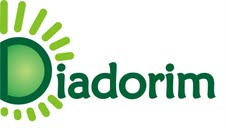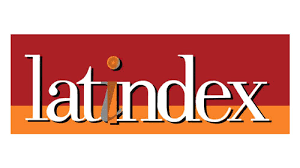CFD modeling of the combustion with detailed chemical kinetics mechanism for incompressible laminar flow
Keywords:
Computational Fluid Dynamics, Combustion of Methane, Detailed Chemical Kinetics MechanismAbstract
This work presents a computational fluid dynamics modeling of combustion with detailed chemical kinetics mechanism for incompressible laminar flow. In CFD modeling, the velocity field is obtained by solving the Navier-Stokes equations, the temperature field is obtained by solving an energy conservation equation, and the gas mixture composition is obtained by solving the conservation equations of individual chemical species a the GRI-MECH 3.0 reaction mechanism is used in the calculation of chemical kinetics. The numerical method for discretization of a generic conservation equation and the operator splitting technique used for the evaluation of chemical source terms are presented in detail. A computer code programmed in the Matlab language is used to simulate a test case and experimental data from a laminar diffusion flame of methane are used to validate the proposed CFD modeling of combustion.
Downloads
References
Westbrook, C.K.; Dryer, F.L. Simplified Reaction Mechanisms for the oxidation of hydrocarbon fuels in Flames.
Combust. Sci. and Tech 1981, Volume 27, pp. 31-43.
Mitchell, R.E.; Sarofim, A.F.; Clomburg, L.A. Experimental and numerical investigation of confined laminar
diffusion flames. Combust. Flame 1980, Volume 37, pp. 227-244.
Mitchell, R.E. Nitrogen Oxide Formation in Laminar Methane-air Diffusion Flames. Doutorado, Massachusetts
Institute of Technology, MA, EUA, 1975.
Santoro, R.J.; Semerjian, H.G.; Dobbins, R.A. Soot Particle Measurements in Diffusion Flames. Combust. Flame
, Volume 51, pp. 203-218.
Smooke, M.D.; Mcenally, C.S.; Pfefferle, L.D. Computational and Experimental Study of Soot Formation in Coflow,
Laminar Diffusion Flame. Combust. Flame 1999, Volume 117, pp. 117-139.
McEnally, C.S.; Pfefferle, L.D. Experimental Study of Nonfuel Hydrocarbon Concentrations in Coflowing Partially
Premixed Methane/Air Flames. Combust. Flame 1999, Volume 118, pp. 619-632.
Bennett, B.A.V.; Mcenally, C.S.; Pfefferle, L.D.; Smooke, M.D. Computational and Experimental Study of
Axisymmetric Coflow Partially Premixed Methane/Air Flames. Combust. Flames 2000, Volume 123, pp. 522-546.
Thomson, K.A.; Gulder, O.L.; Weckman, E.J.; Fraser, R.A.; Smallwood, G.J.; Snelling, D.R. Soot concentration and
temperature measurements in co-annular, nompremixed CH4/air laminar flames at pressures up to 4 MPa.
Combust. Flame 2005, Volume 140, pp. 222-232.
Dasgupta, A. Numerical Simulation of Axisymmetric Laminar Diffusion Flames with Soot. Dissertation in
Mechanical Engineering, Pennsylvania State University, PA, USA, 2015.
Bhowal, A.J.; Mandal, B.K. A Computational Study of Soot Formation in Methane Air Co-Flow Diffusion Flame
Under Microgravity Conditions. Microgravity Science and Technology 2016, Volume 28, pp.395-412.
Azarkhavarani, M.F.; Lessani, B.; Tabejamaat, S. Artificial compressibility method on half-staggered grid for
laminar radiative diffusion flames in axisymmetric coordinates. Numerical Heat Transfer, Part B: Fundamentals
, Volume 72, pp. 392-407.
Soloklou, M.N.; Golneshan, A.A. Numerical investigation on effects of fuel tube diameter and co-flow velocity in a
methane/air non-premixed flame. Heat and Mass Transfer 2019.
Dasgupta, A.; Juez, E.G.; Haworth, D.C. Flame simulations with an open-source code. Computer Physics
Communications 2019, Volume 237, pp. 219-229.
Smith, G.P.; Golden, D.M.; Frenklach, M.; Moriarty, N.W.; Eiteneer, B; Goldenberg, M.; Bowman, C.T.; Hanson,
R.K.; Song, S.; Gardiner Jr., W.C.; Lissianski, V.V.; Qin, Z. GRI-Mech 3.0 ”“ An Optimized Detailed Chemical Reaction
Mechanism for Methane Combustion. Disponível online: http://www.me.berkeley.edu/gri_mech/ (visitado em
/05/2019).
Turns, S.R. An introduction to combustion: Concepts and Applications, 3rd ed.; McGraw-Hill Education: NY, EUA,
Barlow, R.S.; Karpetis, A.N.; Frank, J.H.; Chen, J.Y. Scalar profiles and NO formation in laminar opposed-flow
partially premixed methane/air flames. Combust. Flame 2001, Volume 127, pp. 2102-2118.
McBride, B.J.; Gordon, S.; Reno, M.A. Coefficients for calculating thermodynamic and transport properties of
individual species. NASA Technical Memorandum 4513 1993.
Bird, R.B.; Stewart, W.E.; Lightfoot, E.N. Transport Phenomena, 2nd ed.; John Wiley & Sons: NJ, EUA, 2001.
Cunha, Fábio Alfaia. 2010. Tese (Doutorado em Ciências Mecânicas) ”“ Faculdade de Tecnologia, Pós-Graduação
em Ciências Mecânicas, Universidade de Brasília.
Masson, C.; Saabas, H.J.; Baliga, B.R. Co-located Equal-Order Control-Volume Finite Element Method for
Two-Dimensional Axisymmetric Incompressible Fluid Flow. Int. J. Numer. Methods in Fluids 1994, Volume 18, pp.
-26.
Saabas, H.J.; Baliga, B.R. Co-Located Equal-Order Control-Volume Finite-Element Method for Multidimensional,
Incompressible, Fluid Flow ”“ Part I: Formulation. Numerical Heat Transfer Part B 1994, Volume 26, pp. 381-407.
Liu, F.; Guo, H.; Smallwood, G.J. Effects of radiation model on the modeling of a laminar coflow methane/air
diffusion flame, Combustion and Flame 2004, Volume 138, Issues 1”“2, pp. 136-154.
Datta, A.; Saha, A. Contributions of self-absorption and soot on radiation heat transfer in a laminar methane””air
diffusion flame. Proceedings of the Institution of Mechanical Engineers, Part A: Journal of Power and Energy
, Volume 221, pp. 955”“970.
Uygur, A.B.; Selçuk, N.; Tuncer, I.H. A non-iterative pressure based scheme for the computation of reacting
radiating flows. International Journal of Thermal Sciences 2008, Volume 47, pp. 209-220.
Downloads
Published
How to Cite
Issue
Section
License
Copyright (c) 2021 Revista Interdisciplinar de Pesquisa em Engenharia

This work is licensed under a Creative Commons Attribution-NoDerivatives 4.0 International License.
Given the public access policy of the journal, the use of the published texts is free, with the obligation of recognizing the original authorship and the first publication in this journal. The authors of the published contributions are entirely and exclusively responsible for their contents.
1. The authors authorize the publication of the article in this journal.
2. The authors guarantee that the contribution is original, and take full responsibility for its content in case of impugnation by third parties.
3. The authors guarantee that the contribution is not under evaluation in another journal.
4. The authors keep the copyright and convey to the journal the right of first publication, the work being licensed under a Creative Commons Attribution License-BY.
5. The authors are allowed and stimulated to publicize and distribute their work on-line after the publication in the journal.
6. The authors of the approved works authorize the journal to distribute their content, after publication, for reproduction in content indexes, virtual libraries and similars.
7. The editors reserve the right to make adjustments to the text and to adequate the article to the editorial rules of the journal.









